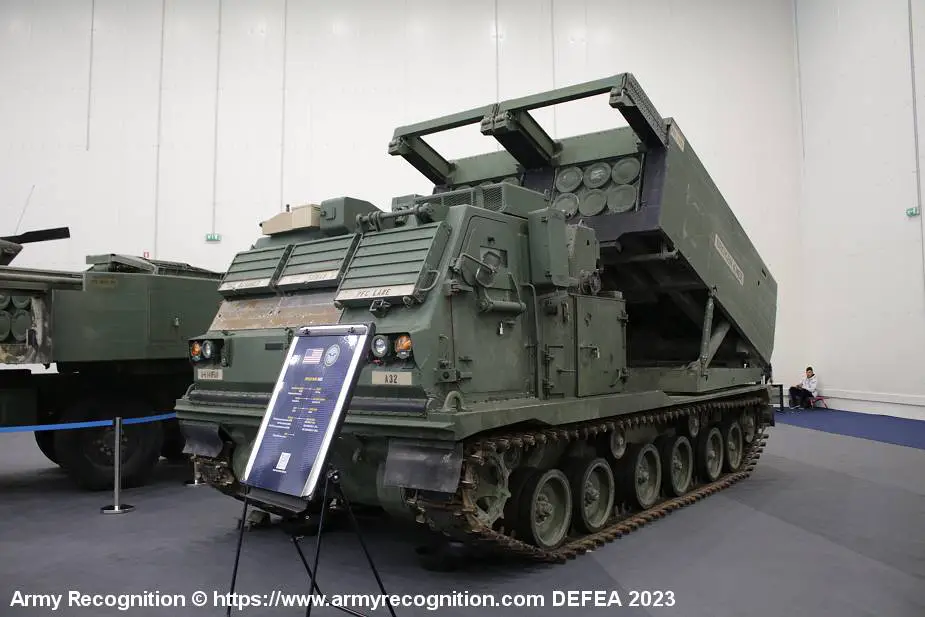ATHENS, Greece, May 9, 2023 – At the DEFEA 2023 defense exhibition, the United States Army is showcasing the M270A1 Multiple Launch Rocket System (MLRS), which is currently in service with the Ukrainian Armed Forces as they confront Russian forces. The exhibition, held in Athens from May 9 to 11, is an opportunity for international defense companies and organizations to display their latest technology and equipment.
Follow Army Recognition on Google News at this link

U.S. Army M270A1 MLRS Multiple Launch Rocket System at DEFEA 2023 defense exhibition in Athens, Greece. (Picture source Army Recognition)
The United States' decision to provide the M270A1 MLRS to Ukraine is part of a broader effort to support the country in its struggle against Russian forces. The US and other NATO allies have been supplying Ukraine with military aid, including training, equipment, and financial assistance, to strengthen the nation's defense capabilities.
The showcase of the M270A1 MLRS at DEFEA 2023 highlights the commitment of the United States and its allies to supporting Ukraine in its fight for sovereignty and territorial integrity. The exhibition serves as a platform for the international defense community to exchange ideas, knowledge, and technology in the interest of global security and stability.
The M270A1 is an upgraded version of the M270 Multiple Launch Rocket System (MLRS), which is a highly mobile artillery rocket system used by the United States Army and several allied nations. It has been employed by the US Army and its NATO allies for several years, and its recent introduction to the Ukrainian Armed Forces has bolstered their efforts in countering Russian aggression.
One of the main enhancements of the M270A1 is the improved fire control system. This upgraded system allows for faster and more accurate targeting, as well as better integration with other battlefield systems and sensors for enhanced situational awareness and coordination.
Another major improvement in the M270A1 is the upgraded launcher-loader module, which provides a more efficient and reliable loading process for rockets and missiles. This reduces the time needed for reloading, allowing the system to deliver more firepower in a shorter period of time.
Additionally, the M270A1 features an improved chassis and suspension system, resulting in better mobility and maneuverability. This allows the MLRS to traverse difficult terrain more easily and quickly reach firing positions, which is crucial for a highly mobile artillery system.
The M270A1 also has an upgraded cab design with better ergonomics and crew comfort, as well as improved armor protection. These enhancements not only improve the working conditions for the crew members but also provide increased survivability on the battlefield.
Some of the key munitions that can be fired from the M270A1 MLRS include the M26 rocket, an unguided rocket with a range of approximately 32 kilometers and armed with M77 submunitions for use against personnel and light armor.
Another type of rocket that the M270A1 can fire is the M30 and M31 Guided Multiple Launch Rocket System (GMLRS) rockets. These are GPS-guided rockets with a range of up to 70 kilometers for the M30 and 84 kilometers for the M31. The increased accuracy of these guided rockets allows for precise strikes against high-value targets with minimal collateral damage.
Additionally, the M270A1 MLRS can launch the ATACMS (Army Tactical Missile System) family of missiles, which includes the MGM-140 and MGM-164 variants. These missiles have a longer range of up to 300 kilometers and can be armed with various types of warheads, including unitary warheads for precision strikes against hardened targets or submunition warheads for area suppression and destruction of enemy forces.















